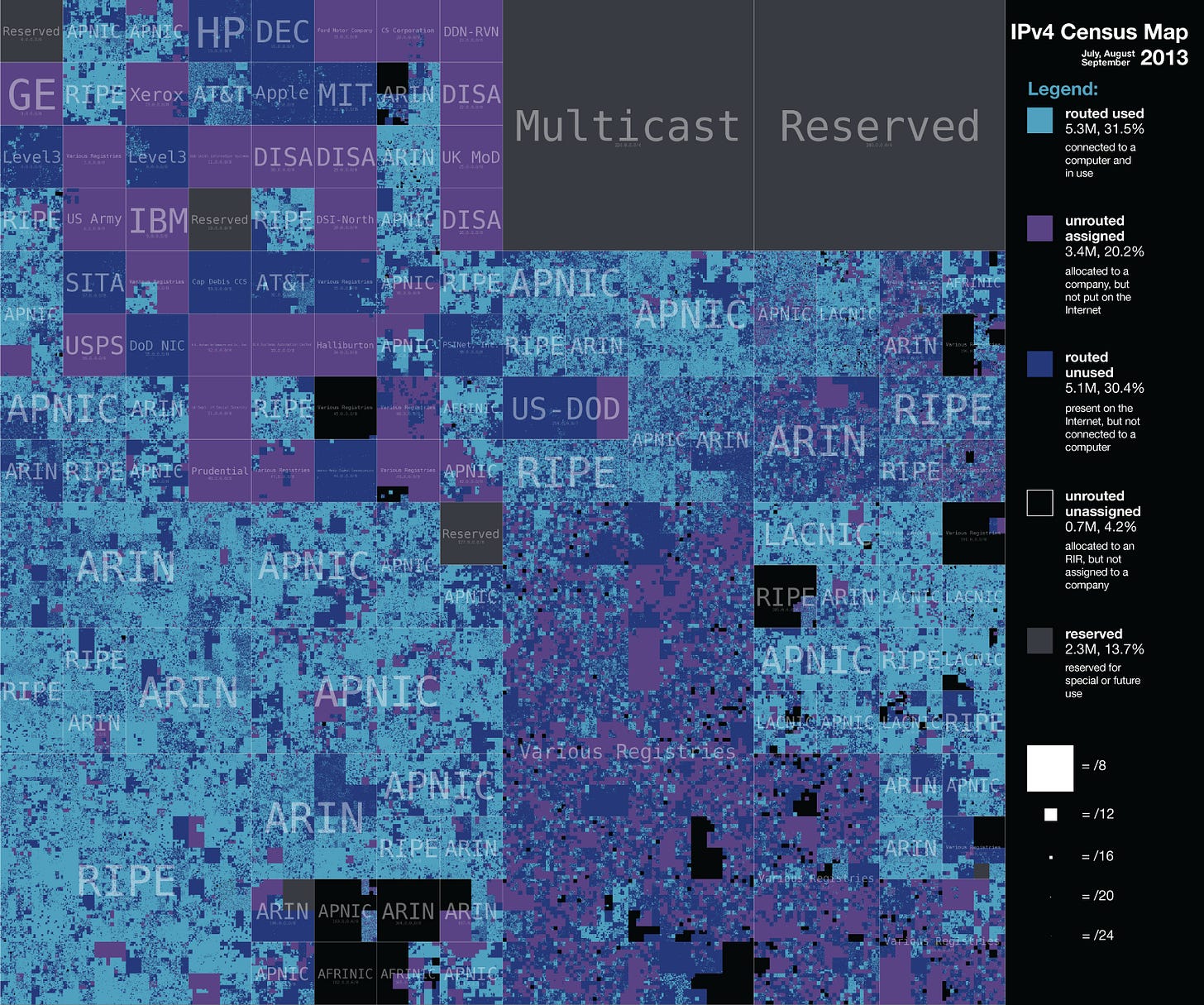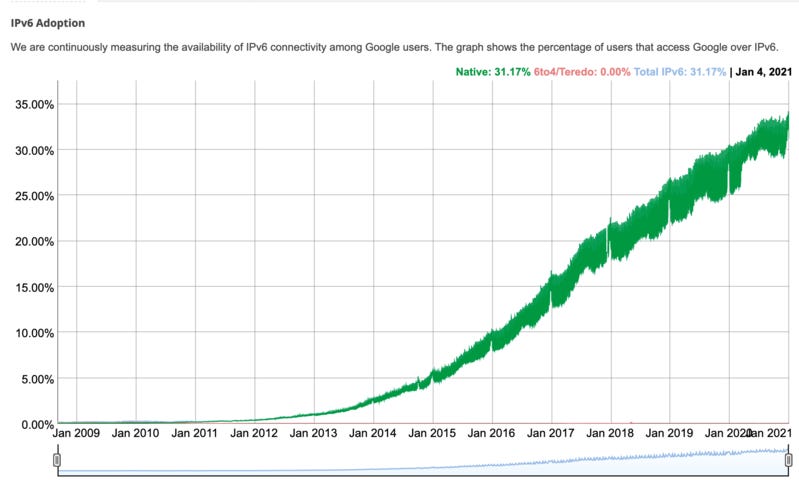Buying IPv4 Addresses
Every device connected to the internet is assigned an IP, whether it's a printer, mobile phone, laptop, or web server. And one particular version is a hot commodity.
A short history on IPv4 – Internet Protocol version 4 – was originally designed in 1983. It uses a 32-bit address space to route traffic on the internet. That means there are only 232 (4,294,967,296) unique addresses. Even in the late 80s, computer scientists knew this wouldn't be enough for the growing internet.
We officially ran out of IPv4 addresses in 2011.

How did we run out? First, large blocks were allocated to companies at the time IPv4 was designed. You can see interesting blocks of addresses allocated to AT&T, Xerox, GE, IBM, The United States Postal Service, MIT, Ford Motor Company, Prudential, and others. Second, the proliferation of mobile phones dramatically increased the number of internet-connected devices. And finally, well, we're just not that efficient at using them.
Luckily, there's existed a new standard for many years, IPv6, which is a 128-bit address space. That means it can hold 2128 addresses or 340 trillion IP addresses. But it's hard to get people to update their software to work with IPv6 addresses.
This means that IPv4 addresses are a lucrative business.
Cloud computing companies are still buying up as many addresses as they can to provide backward compatibility for their customers. In 2011, Microsoft bought 666,624 IPv4 addresses from the defunct Nortel for $7.5m. Since then, addresses have nearly tripled in price.
In 2017, MIT sold 8 million IPv4 addresses, many of them to Amazon. That sale represented half of MIT's address block.
In 2020, Jon Murai, a Japanese professor who is known as the "father of the internet in Japan", put up for sale 14 million IPv4 addresses that he was allocated in the early days of the internet.
Amazon currently has more than 100 million IPv4 addresses. Of those, Amazon has already allocated about half of those to customers.
What will the market look like for IPv4 addresses in the future?
IPv6 has met its design goals – increasing the address space and makes certain improvements to extensibility. Many mobile device networks are IPv6-only. But it has not replaced IPv4. In fact, the overhead of adding IPv6 is something that most organizations won't take on – since you must provide backward compatibility for older clients.
With so many IPv6 addresses, you'd think that you'd be able to request your own block as Jon Murai did in the early days of the internet. Unfortunately, you can't right now, because of the way that internet service providers work.
Maybe we will be able to have our own personal internet address blocks in the future. Or maybe we'll just be hoarding IPv4 addresses like Bitcoin.


